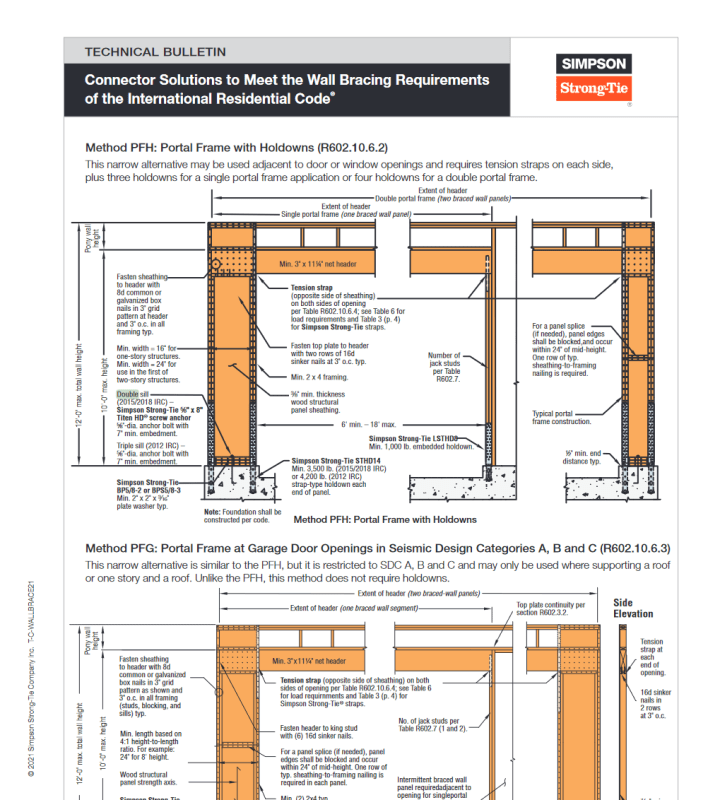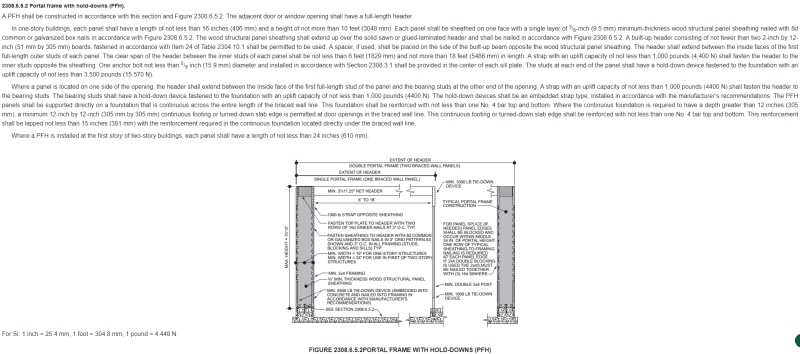JungleJoe
Structural
- Jun 25, 2021
- 35
Hi all,
I've got a question about the Portal frame with hold-downs (PFH) detail in the 2015 IRC (R602.10.6.2) and 2018 IBC (2308.6.5.2). I have seen many versions of this detail drawn and many of them mention a double, or even triple sill plate being required. In the language of the IRC and IBC I cannot find anything talking about this sill plate requirement, yet many of the details I see out there specifically mention that the codes require the double or triple sill (see image below for an example). Do any of you know where this requirement is mentioned?

I've got a question about the Portal frame with hold-downs (PFH) detail in the 2015 IRC (R602.10.6.2) and 2018 IBC (2308.6.5.2). I have seen many versions of this detail drawn and many of them mention a double, or even triple sill plate being required. In the language of the IRC and IBC I cannot find anything talking about this sill plate requirement, yet many of the details I see out there specifically mention that the codes require the double or triple sill (see image below for an example). Do any of you know where this requirement is mentioned?



